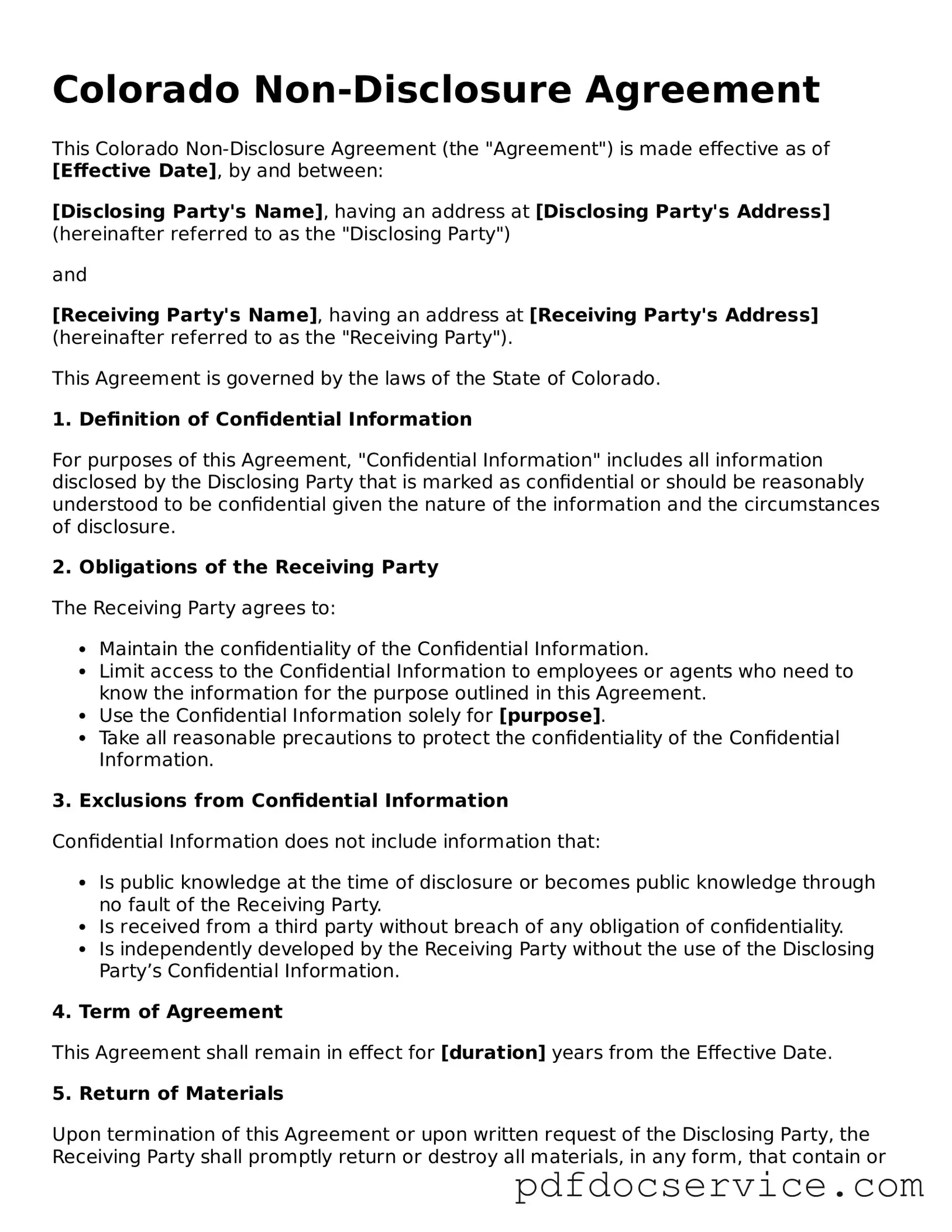What is a Colorado Non-disclosure Agreement (NDA)?
A Colorado Non-disclosure Agreement is a legal contract designed to protect confidential information shared between parties. It ensures that sensitive information, such as trade secrets, business strategies, or proprietary data, remains confidential. NDAs are commonly used in business relationships, employment situations, and partnerships to prevent unauthorized disclosure of information.
Who should use a Non-disclosure Agreement in Colorado?
Any individual or business that plans to share confidential information with another party should consider using an NDA. This includes:
-
Businesses sharing proprietary information with potential partners or investors.
-
Employers disclosing sensitive information to employees or contractors.
-
Individuals discussing ideas or projects with others who may have access to confidential details.
Using an NDA helps safeguard your interests and maintains the integrity of your information.
What are the key components of a Colorado NDA?
A well-drafted Colorado NDA typically includes the following elements:
-
Definition of Confidential Information:
Clearly outline what constitutes confidential information.
-
Obligations of the Receiving Party:
Specify the responsibilities of the party receiving the information, including how they must protect it.
-
Duration of Confidentiality:
Indicate how long the confidentiality obligations will last.
-
Permitted Disclosures:
Identify any circumstances under which the receiving party may disclose the information legally.
-
Consequences of Breach:
Describe the repercussions if either party violates the agreement.
How long does a Non-disclosure Agreement last in Colorado?
The duration of an NDA in Colorado varies based on the terms agreed upon by the parties involved. Generally, the confidentiality obligations can last for a specified period, often ranging from two to five years. However, some information, such as trade secrets, may require indefinite protection. It is essential to clearly state the duration in the agreement to avoid misunderstandings.
Can a Non-disclosure Agreement be enforced in Colorado?
Yes, a Non-disclosure Agreement can be enforced in Colorado as long as it meets legal requirements. The agreement must be clear, reasonable, and not overly broad. Courts in Colorado will generally uphold NDAs that protect legitimate business interests while allowing for necessary disclosures. If a party breaches the NDA, the other party may seek legal remedies, including damages or injunctive relief.
